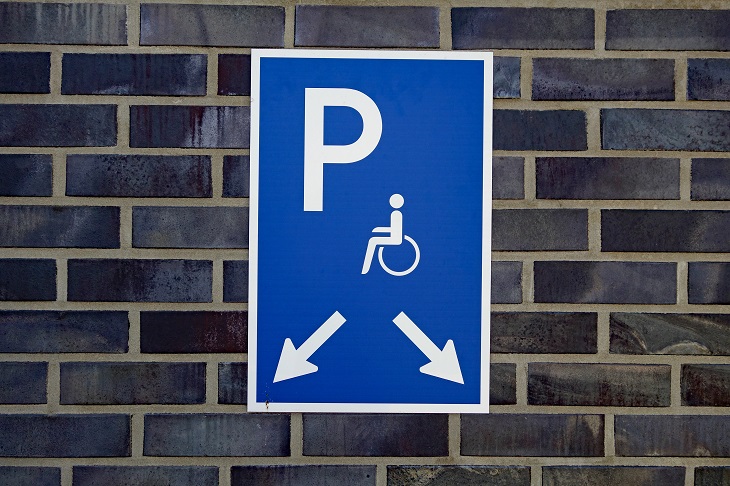In 2020, there are plenty of excellent, state-of-the-art wheelchair-accessible vans on the market. These vans make traveling in a wheelchair, either as a driver or passenger, comfortable, safe, and enjoyable.
Options abound when it comes to making a van wheelchair-accessible. You can buy a purpose-built wheelchair van, or you can adapt a van that was not purpose-built for wheelchair users.
Wheelchair-accessible vans are not a luxury, however. For most wheelchair users, or people who care for a wheelchair user, a wheelchair-accessible van is truly essential. For many wheelchair users, a wheelchair-accessible van is an indispensable tool and a must-have to live a comfortable and independent life.
But wheelchair-accessible vans, either purpose-built or adapted, do not come cheap. The technology is life-changing, but it is also expensive. Disabled wheelchair users and their carers incur a lot of extra costs that non-wheelchair users do not have to worry about.
This means that as a wheelchair user you need to be savvy and clued-in about where and how you can save money. Major savings can come in the form of tax deductions. A lot of medical expenses are tax-deductible, so you can save a lot of money by educating yourself on your tax entitlements.
How Do I Make My Van Wheelchair-Accessible?
Many people choose to buy a purpose-built wheelchair-accessible van. But for many others – for example, people who are newly disabled – converting their current van to make it wheelchair-accessible is a good option.
There are lots of excellent adaptations you can make to a van to make it wheelchair-accessible, and most of these adaptations are tax-deductible. The most common adaptations people make to make their van wheelchair-accessible are:
- Raised roof
- Dropped floors
- Wheelchair lifts
- Wheelchair ramps
- Transfer seats
What Are The Disability Tax Deductions For Handicap Drivers?
As a handicap driver you are entitled to various tax deductions. Essential medical expenses are tax-deductible once they are above 7.5% of your gross income. This means you add up all of your deductible medical expenses, and the amount of the total that is above 7.5% of your gross income is deductible.
What Tax Deductions Are Available For Wheelchair-Accessible Vans?
The most common deductions for wheelchair-accessible vans are essential adaptations, and a portion of the cost of a purpose-built wheelchair-accessible van.
Purpose-built wheelchair-accessible vans are partly tax-deductible. The cost of the wheelchair-accessible van that is above the cost of a similar van without wheelchair-accessible features is tax-deductible.
The most common tax-deductible adaptations to make a van wheelchair-accessible are:
- Electric hand controls
- Left-side accelerator pedal
- Pedal and steering-wheel extensions
- Raised roof
- Dropped floors
- Wheelchair lifts
- Wheelchair ramps
- Transfer seats
How Do I Apply For Disability Tax Deductions For A Wheelchair-Accessible Van?
Register your tax-deductible medical expenses on your tax return when you submit it to the IRS each year in April. On each year’s tax return, include the tax-deductible expenses from that year. This expenses total is then taken off your gross income and you only pay tax on the reduced income amount.
Who Is Eligible For Disability Tax Deductions For Wheelchair-Accessible Vans?
Tax deductions for wheelchair vans and van adaptations are available to the disabled person, spouse, or caregiver that paid the tax-deductible expense.
What Other Travel Expenses Can I Claim A Tax Deduction On As A Disabled Driver?
As a disabled driver you can also claim for travel costs that accrue from essential medical related travel. This can include gas, parking fees, and toll fees that are spent on the wary to and from medical appointments.

How Else Can I Save Money As A Disabled Driver?
A great way to save money as a disabled driver is by getting a disabled parking permit. A disabled permit enables its owner to park in designated disabled parking spaces. This is incredibly helpful and a great money-saver.
What Are The Qualifying Conditions For A Disabled Parking Permit?
The qualifying conditions to get a disabled parking permit change slightly state by state. But in all states, being a wheelchair user will qualify you to hold a disabled parking permit.
How Do I Apply For A Disabled Parking Permit?
To apply for a disabled parking permit, arrange a telemedicine consultation with a medical professional through Dr. Handicap. Once the medical professional verifies your disability they will sign and fill in the relevant sections of a DMV application form and email it directly to you.
The government is there to give you the help you deserve, as a disabled person, in the form of tax deductions and disabled parking permits. So don’t miss out on what you are legally entitled to!
Featured image by Marcus Aurelius on Pexels




